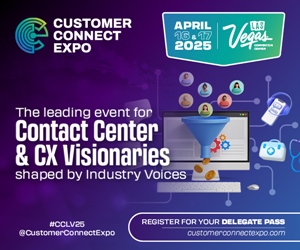
Data is at the heart of delivering exceptional customer experiences. While businesses have long recognized the value of storing, processing, and analyzing data, the ability to utilize this information in real-time is what truly sets customer-focused companies apart.
Enter the power of data warehouses and reverse ETL—a solution that allows organizations to transform raw data into meaningful, actionable insights in the blink of an eye.
But what exactly is reverse ETL, and how does it help bring data warehouse insights back to operational systems to enhance customer experiences in real time? This post will walk you through the concept and why it’s a game-changer for businesses striving to stay ahead.
What Is Reverse ETL?
To understand reverse ETL, let’s first break down traditional ETL (Extract, Transform, Load). ETL is the process of extracting data from operational systems (e.g., CRMs, e-commerce platforms), transforming it into meaningful formats, and loading it into a data warehouse for analysis.
Reverse ETL flips this process by taking data from your warehouse and syncing it back into operational tools—like sales platforms, customer support software, or marketing tools. The result? Teams are empowered with real-time, actionable insights where they need them most to make better decisions faster.
Why Does Reverse ETL Matter for Customer Experience?
Reverse ETL is more than just a “nice-to-have” for businesses leveraging data warehouses—it’s a must-have for any company that wants to build deeper, more personalized relationships with its customers. Here’s why:
- Real-Time Insights for Real-World Actions
Imagine a scenario where your company detects a frustrated user during an interaction with customer support. With reverse ETL, this interaction signals immediate action by syncing relevant data into behavior-driven marketing platforms, enabling tailored offers or solutions to improve customer satisfaction. Faster responses lead to happier customers.
- Breaking Communication Silos
Traditional models often confine data within analytics dashboards, accessible to only a few departments. Reverse ETL eliminates these barriers, empowering your teams with the information they need when they need it. Sales, support, and marketing teams can instantly access data insights to deliver tailored experiences like personalized promotions or proactive solutions.
- Enhanced Personalization
Today’s customers expect brands to know them—what they want, when they want it, and how they want it. By syncing warehouse data back into your customer-facing tools, reverse ETL enables hyper-personalized communication and offerings.

Real-World Applications of Reverse ETL to Boost Customer Experience
- Personalized Marketing Campaigns
Marketing thrives on personalization. A data warehouse gives marketers a 360-degree view of customer behavior, but these insights are only useful when put into action. Reverse ETL pushes these insights into marketing platforms like HubSpot or Mailchimp, enabling campaigns driven by real-time data—such as purchase history, browsing behavior, and segmentation. The result is highly targeted communications that are more likely to convert.
- Proactive Customer Support
Reverse ETL allows support agents to access enriched customer profiles in their ticketing tools. For instance, a support agent dealing with a query will see purchase trends, past interactions, and sentiment analysis—all without having to dig through data silos. A well-informed support experience leads to faster resolutions and happier customers.
- Optimized E-Commerce Recommendations
Imagine running an e-commerce business selling apparel. With reverse ETL, data from your warehouse—like browsing history, abandoned carts, or past purchases—powers recommendation engines directly on your website. This boosts relevance, engages shoppers, and grows conversions.
- Seamless Loyalty Programs
Loyalty programs can deliver massive customer retention benefits when personalized appropriately. Reverse ETL ensures loyalty platforms are synced with up-to-date data, automatically updating points balances and surfacing personalized rewards in real-time.
- Sales Enablement
For B2B enterprises, reverse ETL enables sales teams to access critical account intel within tools like Salesforce. They can see which customers need follow-ups, what their buying signals are, and how deals are progressing—all to close opportunities faster while focusing on customer satisfaction.
How Reverse ETL Unlocks Real-Time Customer Experiences
Reverse ETL bridges the gap between data warehouses and operational tools. By making data actionable across departments, businesses can serve their customers more effectively and efficiently. Here’s why real-time integration is a game-changer:
- Improved Decision-Making
When every team has access to the same enriched customer data—updated in real-time—they can make consistent and rapid decisions across various touchpoints.
- Customer-Centric Operations
Reverse ETL enables your operations to prioritize customer needs. Whether it’s delivering the right marketing message or solving queries with razor-sharp accuracy, your customers benefit from seamless interactions.
- Fewer Missed Opportunities
Opportunities to improve customer experiences can slip through the cracks if data isn’t timely or accurate. Reverse ETL prevents this by ensuring real-time syncing between systems.

Overcoming Key Challenges with Reverse ETL
While reverse ETL offers huge benefits, there are challenges enterprises face during implementation. Here’s how to overcome them:
- Complex Data Mapping
Moving data from a warehouse into operational systems often requires complex data mapping. The solution? Leverage modern reverse ETL tools like Census, Hightouch, or Grouparoo. These tools simplify syncing through intuitive interfaces and pre-built connectors.
- Data Privacy and Compliance
Transitioning customer data requires robust privacy compliance. Choose tools that adhere to standards like GDPR and SOC 2 compliance to ensure trust and safety.
- Ensuring Data Consistency
Real-time syncing demands consistent, reliable data workflows. Investing in proper monitoring mechanisms ensures that every data entry remains accurate—avoiding embarrassing mishaps.
Key Takeaway
Data warehouses provide organizations with invaluable insight into their operations and customers. But to truly enhance the customer experience, these insights need to move beyond dashboards and into the hands of those interacting with customers in real-time.
Reverse ETL is the key to breaking down silos and transforming insights into real-world actions. By enabling data movement between your warehouse and operational tools, you empower teams to deliver personalized, timely, and impactful experiences.




